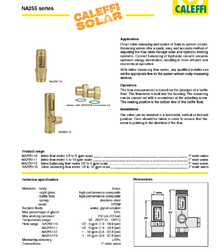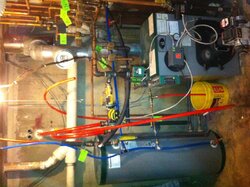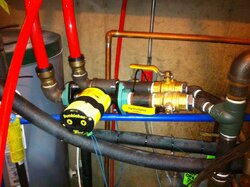anybody have any experience with this yet? with slant fin baseboards, might it be beneficial for one to set this up to regulate a constant return temp (140/150*?) sent back to storage? the thought is that most of the water in storage would be cycled through only once before needing to be recharged. i imagine it might be good for stratification?
or would delta T be better?
or would delta T be better?





